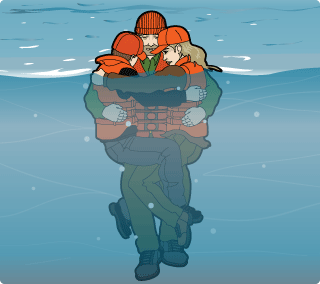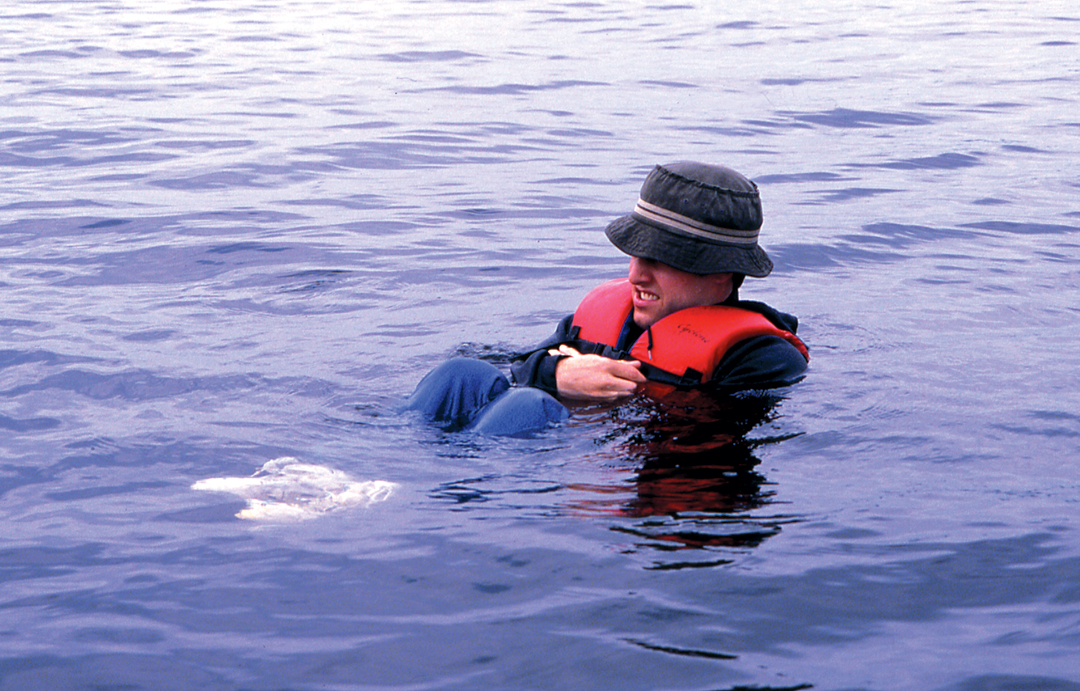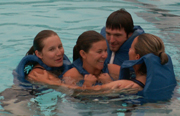How Can We Help?
The greatest threat from cold is hypothermia and you lose body heat much faster when immersed in cold water than you do while standing in cold air. Your body functions normally at 98.6 degrees F. As your core body temperature drops, heat loss will occur first in your extremities and then in your vital organs and brain. You’ll start to lose control of your body if not consciousness. If your body temperature reaches anywhere from 86 to 89.6 degrees F, death is almost a certainty. Sudden exposure to cold water can also cause shock, spasms, muscular dysfunction or a heart attack. You may not be able to climb back onto the boat or even breathe and stay afloat.
The aim of the "HELP" (left image) and "Huddle" positions is to keep the warm water close to the body from being replaced by colder surrounding water.
H.E.L.P. Position
If you’re unable to get out of the water, you should adopt HELP, which is the heat escape lessening posture. Hold your arms snugly across your upper body and tuck your elbows into your sides. Draw your thighs together, bending your knees and bringing them up to your chest. It’s almost as if you’re adopting a fetal position, however, your trunk should be upright with your head above water. This position protects those areas of your body that are most vulnerable to the cold. Keep in mind, however, that some personal flotation devices won’t allow you to draw your knees up.
This posture will increase survival time by nearly 50%.
 |
|
Huddle Position
A group of two or more people can adopt the huddle position to conserve heat. This position also prevents individuals from drifting away, provides a larger target for recovery, and reduces panic.
Knit the sides of your bodies together and press your chests, bellies and groins against each other. Wrap your arms around each other’s backs or life jackets at shoulder or waist level. Intertwine your legs to maintain bodily contact. Meanwhile hold on to any buoyancy aids to stay afloat. Because children are more susceptible to the cold water, they should be cushioned in the middle of the group.
 |
|
Sources:
- http://www.hunter-ed.com/missouri/studyGuide/Cold-Water-Immersion-and-Hypothermia/201025_700062537
- http://www.seagrant.umn.edu/coastal_communities/hypothermia
- http://www.maritimenz.govt.nz/Recreational-Boating/Lifejackets/Survive-in-cold-water.asp
- http://www.livestrong.com/article/413375-what-is-the-huddle-position-in-swimming/

